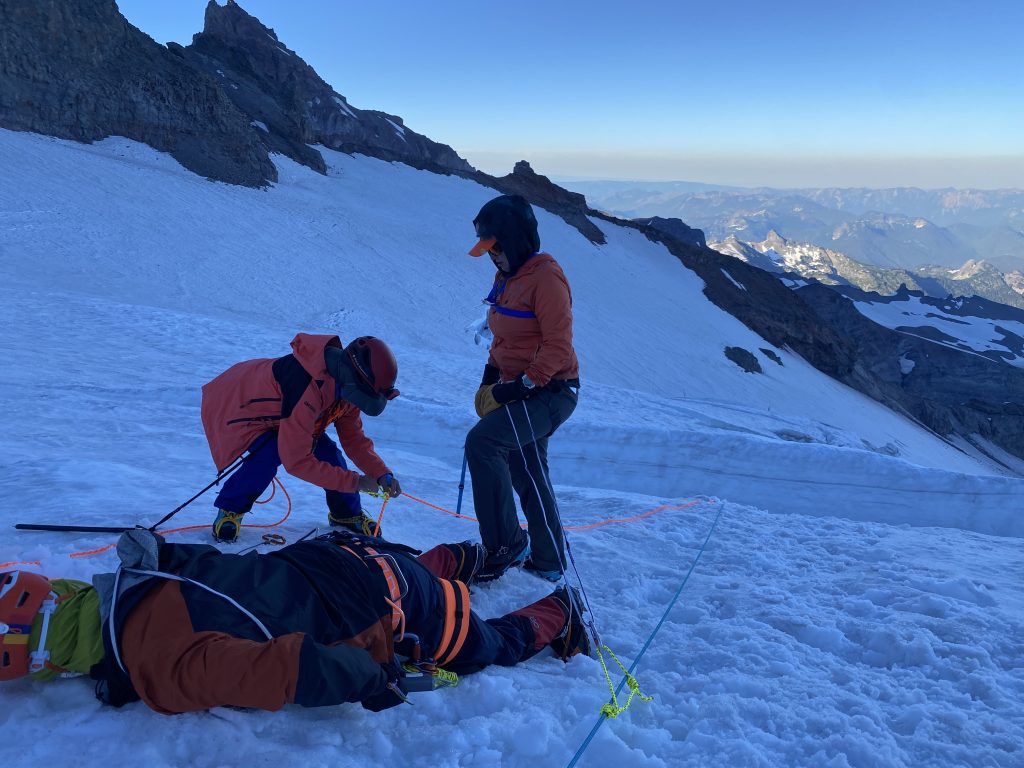
Crevasse Rescue
Crevasse Rescue

Crevasse rescue is an integral part of mountaineering and a necessary skill to build before venturing up more technical mountains. Learn and practice the skills you will need for glaciated mountains from Kulshan/Kweq’ Smánit (Baker) to Tahoma (Rainier) itself.
Learn the pre-requisite skills for crevasse rescue at a Snow Skills clinic.
Trip Details
Logistics
- Meet Location: 5007 Pacific Hwy East, Suite 19, Fife, WA, 98424
- Meet Time: 8 AM
- End Time: Approximately 5 PM
Gear Provided
- First-aid kit and satellite phone
- Ropes
- 3-1 system kit and supplies
Highlights
Rescue Skills – 3-1 Systems – Glacier Skills
Difficulty Level
Challenging: Requires participants to have taken Snow Skills course or to be familiar with snow travel and self-arrest. Includes learning and building complex rope systems.
Price: $300 per person
Photo Gallery



Indigenous Land
Nisqually
“It [Lushootseed] is from the beginning strength of the people, and it is from what the Creator put down upon this land for people…. The earth speaks. The animals speak. Everything has a voice.”
Vi Hilbert, Grandmother Video Project
The traditional homeland of the Nisqually people includes about two million acres of the Nisqually River drainage from Mt. Rainier to Olympia. They have inhabited this land for thousands of years, since, according to their history, their ancestors, the Squalli-absch, came north across the Cascades from the Great Basin. Nisqually life, territory, and culture have been heavily impacted by the European invasion of the Puget Sound area, and they have fought hard to maintain their identity and dignity in the face of displacement, violence, and suppression. Multiple names around the Puget Sound area honor Leschi, a war chief of the Nisqually Tribe during the mid 19th century, who, along with his brother Quiemuth, led the fight for his people’s right to remain on their ancestral homeland.
The Nisqually way of life revolves around salmon, and today, they lead the stewardship of fisheries resources in the Nisqually River area. The tribe operates two fish hatcheries on Clear Creek and Kalama Creek. The tribe’s resilience, dedication, and commitment can be seen in their continued efforts to come alongside, guide, and lead these efforts to care for the land.
Nisqually is a Southern Coast Salish language, and is a dialect of Lushootseed. Stories, songs, and other Nisqually language resources can be found on the tribe’s website, www.nisqually-nsn.gov.

